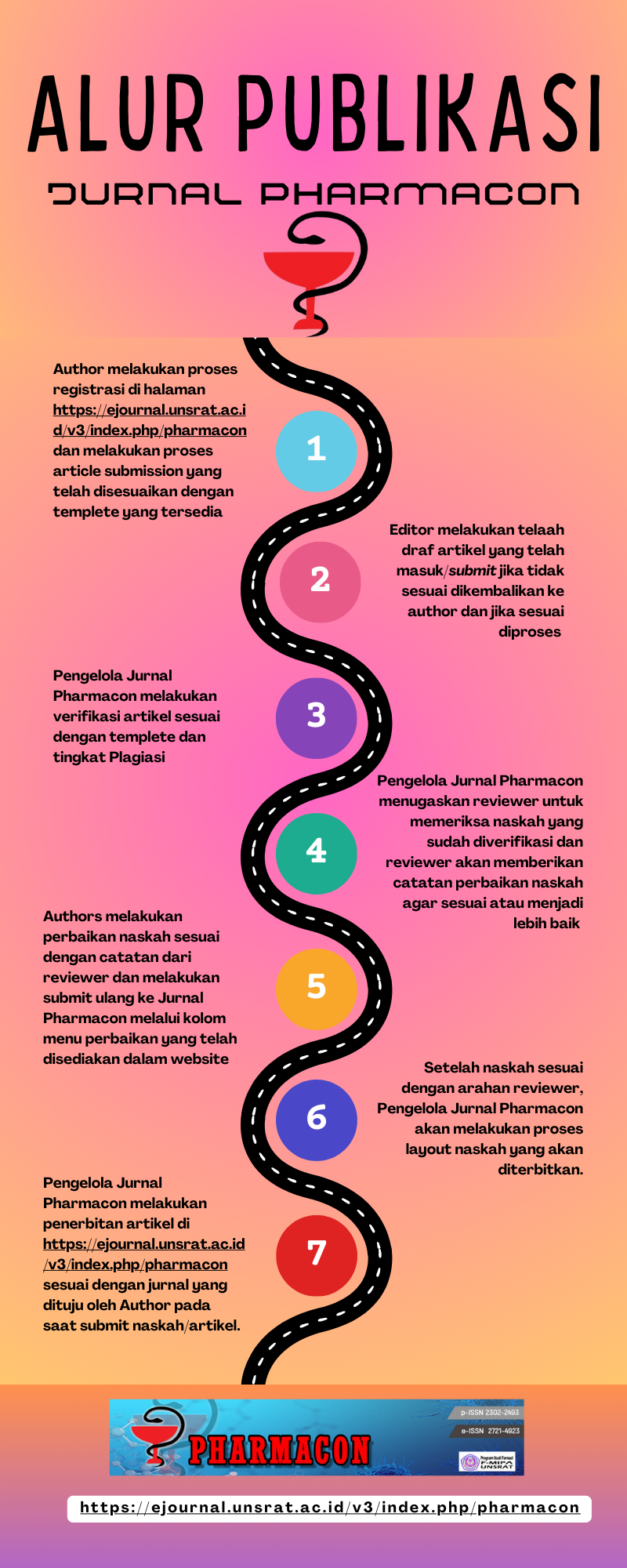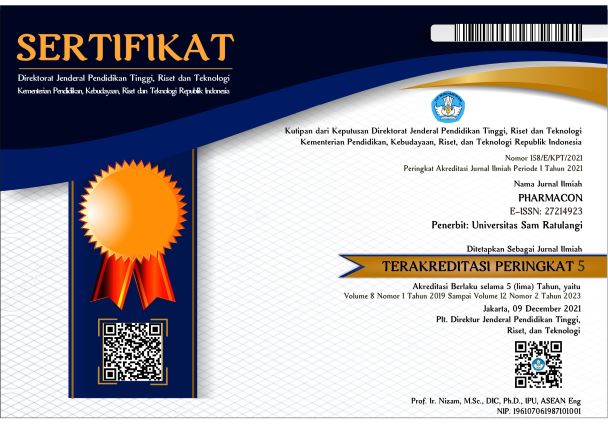UMUR SIMPAN BAKASANG IKAN CAKALANG (KATSUWONUS PELAMIS. L) DENGAN METODE ACCELERATED SHELFT LIFE TEST (ASLT) BERDASARKAN PARAMETER FREE FATTY ACID (FFA)
DOI:
https://doi.org/10.35799/pha.8.2019.29389Abstract
ABSTRACT
Bakasang is a fermented product made from known fish offal in North Sulawesi. This study aims to determine the shelf life of bakalang fish with ASLT method with Free Fatty Acid (FFA) parameter. Fermented Souce of Cakalang (Katsuwonus pelamis. L) is stored at 40; 50; and 60°C which is concentrated on days 0; 5; 10; 15; and 20. The results of the calculation of the shelf life of Fermented Souce of Cakalang through the Arrhenius equation for parameter Free Fatty Acid (FFA) at 25°C for 583 days.
Keywords: Fermented Souce, Katsuwonus pelamis. L, ASLT Method, Life Shelf, FFA Level.        Â
ABSTRAK
Bakasang adalah produk fermentasi yang dibuat dari jeroan ikan yang sudah dikenal di Sulawesi Utara. Penelitian ini dimaksudkan untuk mengetahui umur simpan bakasang ikan cakalang dengan metode Accelerated Shelf Life Test (ASLT) dengan parameter Free Fatty Acid (FFA). Bakasang Ikan Cakalang (Katsuwonus pelami. L) disimpan pada suhu 40; 50; dan 60°C yang diamaiti pada hari ke 0; 5; 10; 15; dan 20. Hasil penelitian menunjukkan bahwa umur simpan bakasang ikan Cakalang (Katsuwonus pelamis, L) melalui persamaan Arrhenius untuk parameter Free Fatty Acid (FFA) pada suhu 25°C selama 583 hari.
Kata Kunci: Bakasang, Katsuwonus pelami. L, Metode ASLT, Umur Simpan, Kadar FFA.Downloads
Published
How to Cite
Issue
Section
License
Authors who publish with this journal agree to the following terms:
- Authors retain copyright and grant the journal right of first publication with the work simultaneously licensed under a Creative Commons Attribution-NonCommercial 4.0 International License that allows others to share the work with an acknowledgement of the work's authorship and initial publication in this journal.
- Authors are permitted and encouraged to post their work online (e.g., in institutional repositories or on their website) prior to and during the submission process, as it can lead to productive exchanges, as well as earlier and greater citation of published work (See The Effect of Open Access)










